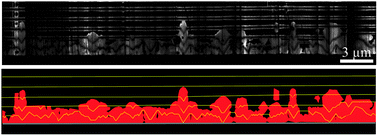The optimisation of GaN-based electronic and optoelectronic devices requires control over the doping of the material. However, device performance, particular for lateral transport electronic devices, is degraded by the presence of unintentional doping, which for heteroepitaxial GaN layers grown in the polar (0001) orientation is mainly confined to a layer adjacent to the GaN/substrate interface. The use of scanning capacitance microscopy (SCM) has demonstrated that this layer forms due to the high rate of incorporation of gas phase impurities, primarily oxygen, during the early stages of growth, when N-rich semi-polar facets are often present. The presence of such facets leads to additional unintentional doping when defect density reduction strategies involving a three-dimensional growth phase (such as epitaxial lateral overgrowth) are employed. Many semi-polar epitaxial layers, on the other hand, exhibit significant unintentional doping throughout their thickness, except when a three-dimensional growth phase is introduced to aid in defect density reduction resulting in the presence of (0001) and non-polar facets which incorporate less dopant. Non-polar epitaxial samples exhibit behaviour more similar to (0001)-oriented material, but oxygen diffusion from the sapphire substrate along prismatic stacking faults also locally affects the extent of the unintentional doping in this case.

You have access to this article
 Please wait while we load your content...
Something went wrong. Try again?
Please wait while we load your content...
Something went wrong. Try again?


 Please wait while we load your content...
Please wait while we load your content...